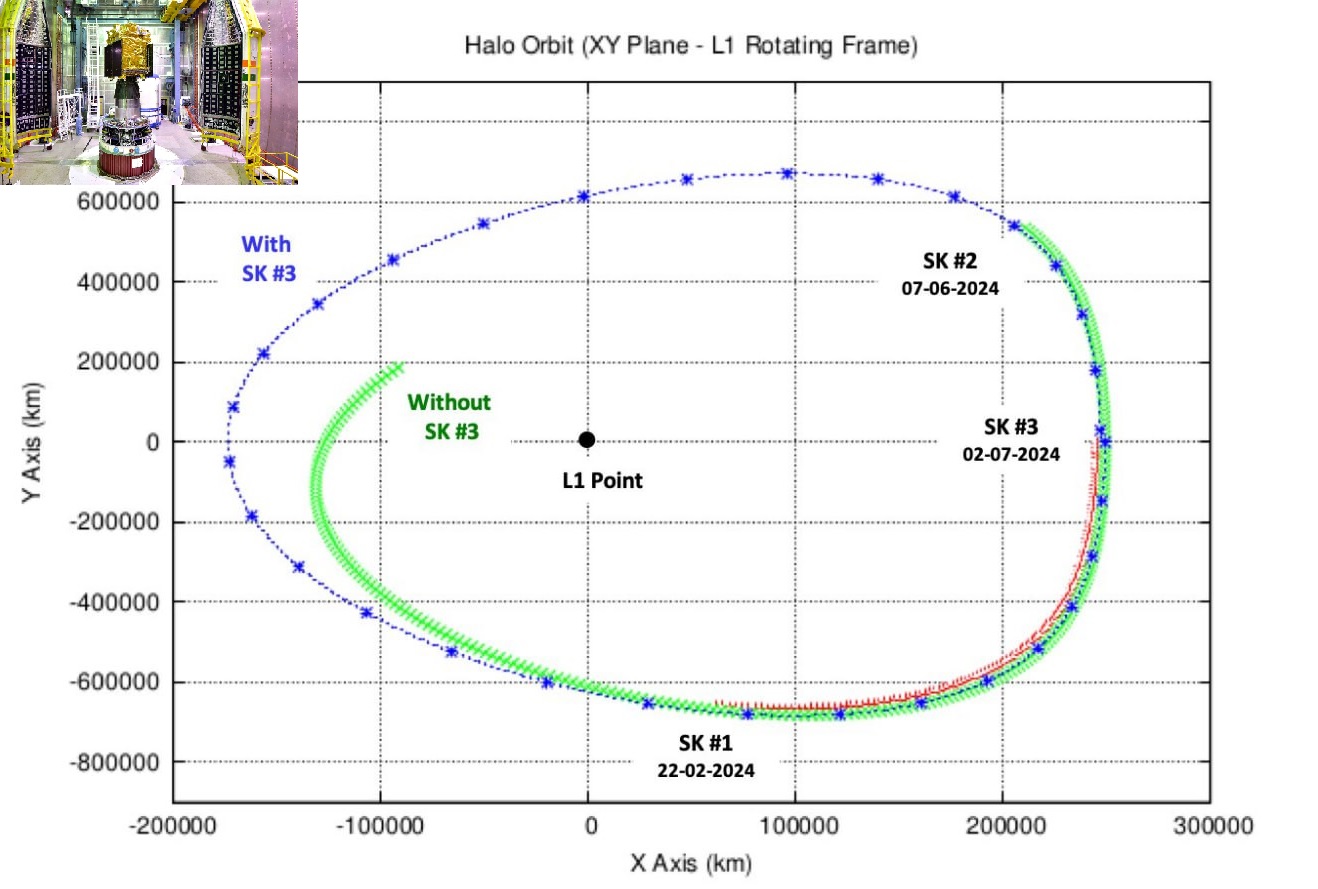ISRO's Aditya-L1 Completing First Halo Orbit and Entering Second

The Indian Space Research Organisation (ISRO) has achieved a significant milestone with its Aditya-L1 spacecraft, designed for solar observation. This pioneering mission, named after the Hindu sun god Aditya, aims to deepen our understanding of the Sun and its various phenomena. Recently, the spacecraft successfully completed its first halo orbit around the Sun-Earth L1 point and has now entered its second halo orbit, marking a critical phase in its mission.
The Aditya-L1 Mission:
Launched with the primary objective of studying the solar corona, the outermost layer of the Sun's atmosphere, Aditya-L1 represents India's first dedicated solar mission. The spacecraft is equipped with a suite of scientific instruments designed to observe the Sun's outermost layers, analyze solar emissions, and understand the impact of solar activities on the Earth's climate and environment.
The Sun-Earth L1 point, located approximately 1.5 million kilometers from Earth, is a strategic position in space where the gravitational forces of the Earth and the Sun balance the orbital motion of a satellite. This allows Aditya-L1 to maintain a stable orbit and continuously observe the Sun without the interference of the Earth's shadow.
Completing the First Halo Orbit
Aditya-L1's first halo orbit around the L1 point is a significant achievement for ISRO. The halo orbit, a three-dimensional loop around the L1 point, allows the spacecraft to have a continuous and unobstructed view of the Sun. This continuous observation is crucial for monitoring solar activities and collecting valuable data.
The completion of the first halo orbit involved precise navigational maneuvers and careful adjustments to the spacecraft's trajectory. This phase allowed the mission team to test the spacecraft's systems and ensure its instruments were functioning optimally in the harsh environment of space.
Entering the Second Halo Orbit
Following the successful completion of the first halo orbit, Aditya-L1 has now entered its second halo orbit around the L1 point. This transition marks the beginning of a new phase in the mission, where the spacecraft will continue its scientific observations and data collection.
The second halo orbit will enable Aditya-L1 to gather more extensive data on the solar corona and other solar phenomena. The continuous and unobstructed view provided by the halo orbit is essential for studying the dynamic processes occurring on the Sun's surface and their effects on space weather.
Scientific Instruments and Objectives
Aditya-L1 is equipped with several state-of-the-art instruments designed for a range of solar observations:
1. Visible Emission Line Coronagraph (VELC): Designed to study the solar corona and measure its temperature and velocity.
2. Solar Ultraviolet Imaging Telescope (SUIT): Captures images of the Sun in ultraviolet wavelengths to study its outer layers.
3. Aditya Solar Wind Particle Experiment (ASPEX): Measures the properties of solar wind particles.
4. Plasma Analyser Package for Aditya (PAPA): Analyzes the composition and properties of solar wind plasma.
5. Solar Low Energy X-ray Spectrometer (SoLEXS): Observes the solar X-ray emissions.
6. High Energy L1 Orbiting X-ray Spectrometer (HEL1OS): Measures high-energy solar emissions.
The data collected by these instruments will provide valuable insights into the Sun's behavior, including the mechanisms driving solar flares, coronal mass ejections, and their impact on space weather.
Implications and Future Prospects
The success of Aditya-L1's mission has far-reaching implications for solar science and space weather forecasting. By understanding the Sun's activities and their effects on the Earth's magnetosphere and atmosphere, scientists can better predict and mitigate the impacts of space weather on satellite communications, power grids, and other critical infrastructure.
Moreover, Aditya-L1's achievements demonstrate ISRO's growing capabilities in space exploration and scientific research. The mission paves the way for future endeavors in solar observation and other areas of space science.
ISRO's Aditya-L1 spacecraft has reached a significant milestone by completing its first halo orbit around the Sun-Earth L1 point and entering its second halo orbit. This achievement underscores the mission's potential to enhance our understanding of the Sun and its interactions with the Earth. As Aditya-L1 continues its journey, the scientific community eagerly anticipates the wealth of data and insights it will provide, contributing to the global body of knowledge on solar phenomena and space weather.


